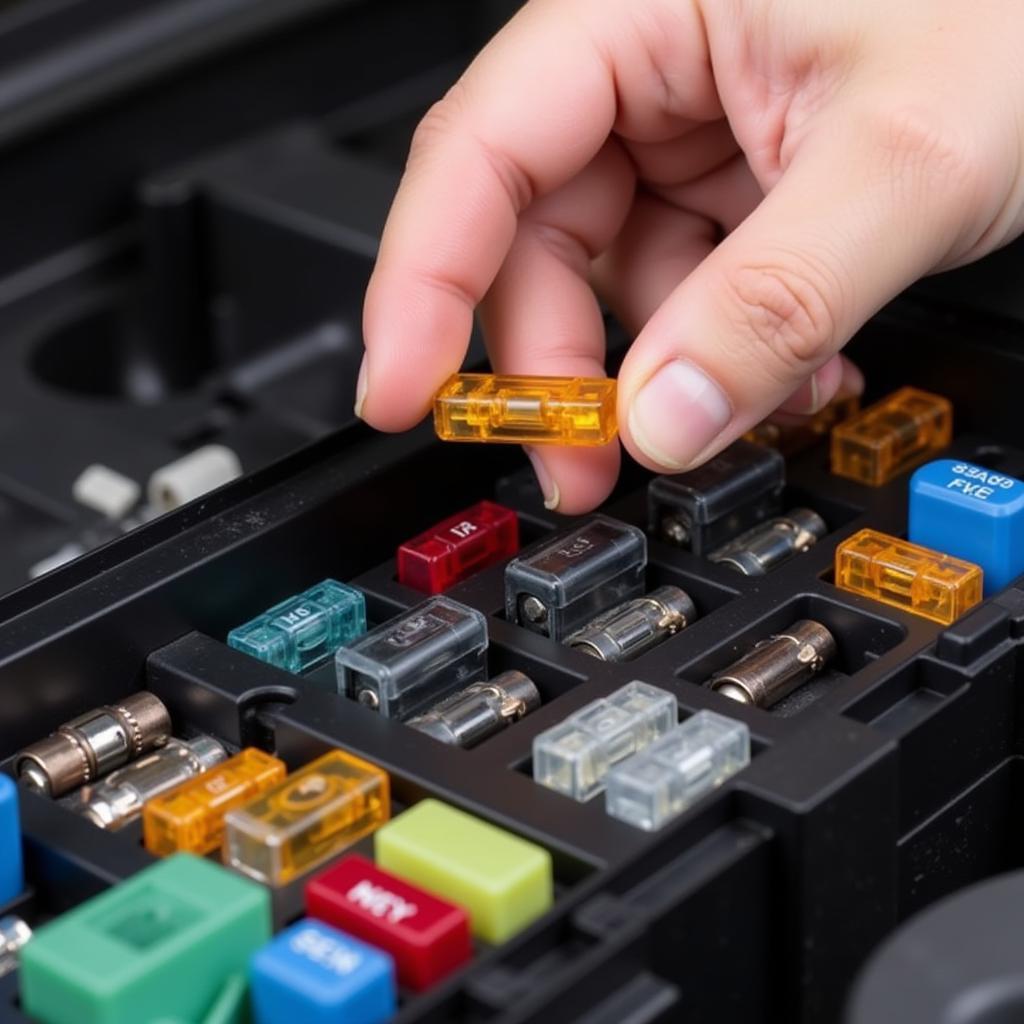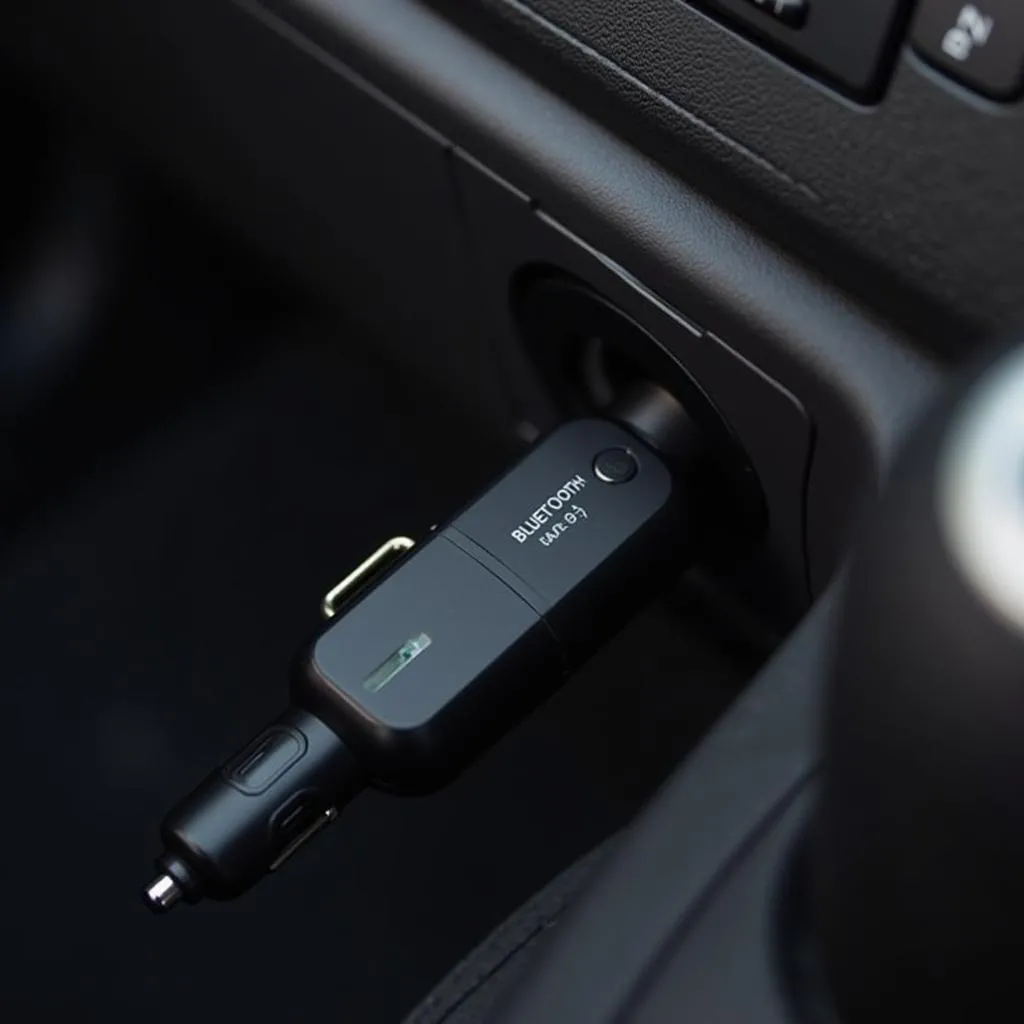A dead car battery can be a frustrating experience. But before you rush to replace it, you need to diagnose battery drain in car to identify the root cause. A simple jump start might get you going temporarily, but the problem will likely return if the underlying issue isn’t addressed. This article will provide a comprehensive guide on how to pinpoint the culprit behind your car’s battery drain, empowering you to take control and fix the issue.
Understanding Car Battery Drain
Car battery drain, also known as parasitic draw, occurs when something in your electrical system continues to consume power even after the ignition is off. This can range from a faulty interior light to a more serious electrical malfunction. Identifying the source of this drain is crucial to prevent recurring dead battery situations. Similar to a parasitic amp draw, this continuous drain can slowly deplete your battery, leaving you stranded.
Common Causes of Battery Drain
Several culprits can contribute to battery drain. Some of the most common include:
- Interior Lights: A light left on in the trunk, glove compartment, or under the hood can drain your battery overnight.
- Faulty Door Switches: A malfunctioning door switch can trick the car into thinking a door is open, keeping interior lights activated and draining power.
- Aftermarket Accessories: Improperly installed stereos, alarms, or other accessories can draw excessive power, even when the car is off.
- Faulty Alternator: While not a direct drain, a bad alternator can prevent the battery from recharging properly, leading to eventual depletion.
- Old or Damaged Battery: A battery nearing the end of its lifespan may struggle to hold a charge, mimicking the symptoms of a parasitic draw.
- Gloom Plug Issues (Diesel Engines): Faulty gloom plugs can stay on longer than necessary, drawing significant power.
How to Diagnose Battery Drain in Car: A Step-by-Step Guide
Diagnosing a car battery drain requires a systematic approach. Here’s a detailed guide to help you:
- Gather Your Tools: You’ll need a multimeter, protective gloves, and potentially a test light.
- Safety First: Disconnect the negative battery cable before starting any testing.
- Measure the Current Draw: Set your multimeter to the DC amps setting. Connect the red lead to the negative battery terminal and the black lead to the negative battery cable. Observe the reading. A small draw (less than 50 milliamps) is generally acceptable. A higher reading indicates a significant drain. If you have issues with your car not starting after this, you can find helpful tips on if car wont start.
- Isolate the Circuit: Begin removing fuses one by one, checking the multimeter reading after each removal. A significant drop in the reading indicates the circuit connected to that fuse is the culprit.
- Pinpoint the Problem: Once you’ve identified the circuit, inspect the components within that circuit for faults. This might involve checking wiring, switches, relays, or other electrical devices.
- Test Individual Components: Use a test light or multimeter to test individual components within the suspected circuit to identify the specific faulty part.
 Checking the Car Fuse Box for Battery Drain
Checking the Car Fuse Box for Battery Drain
Advanced Diagnostic Techniques
For more complex cases, advanced diagnostic techniques may be necessary. These include using a scan tool to check for diagnostic trouble codes (DTCs) related to the electrical system. Sometimes, a check engine light for bad battery can indicate underlying issues contributing to battery drain.
What if the Battery Keeps Dying?
If your battery keeps dying despite your efforts, consider these possibilities:
- Hidden Drain: A drain could be hidden within a complex system, requiring professional diagnosis.
- Intermittent Drain: The drain might be intermittent, making it difficult to pinpoint without specialized equipment.
- Faulty Battery Management System: Modern vehicles have complex battery management systems that can malfunction and cause drain issues.
“A common mistake is assuming a new battery will solve the problem. Addressing the underlying cause of the drain is crucial for long-term reliability,” says John Miller, Senior Automotive Electrical Engineer.
This is particularly true for specific car models known for battery issues, such as the Chrysler 200 dead battery or the Range Rover Sport battery problems.
Conclusion
Diagnosing battery drain in car can be a challenging but rewarding task. By following these steps and using the right tools, you can often identify the source of the drain and prevent future dead battery situations. Remember to prioritize safety and consult a professional if you’re uncomfortable working with your car’s electrical system. Addressing the root cause of the battery drain is essential to ensuring reliable vehicle operation.
FAQ
- How can I prevent battery drain? Regularly check interior lights, ensure doors are properly closed, and avoid leaving accessories plugged in when the car is off.
- What is a normal parasitic draw? A draw below 50 milliamps is generally acceptable.
- Can a bad alternator cause battery drain? While not a direct drain, a faulty alternator prevents the battery from recharging, leading to eventual depletion.
- Do I need special tools to diagnose battery drain? A multimeter is the most essential tool.
- When should I consult a professional? If you’re unable to identify the drain or uncomfortable working with electrical systems, consult a professional.
- How often should I check my car battery’s health? It’s recommended to check your battery every six months, especially before winter.
- Can extreme temperatures affect battery life? Yes, both extreme heat and cold can shorten battery lifespan and contribute to drain issues.


